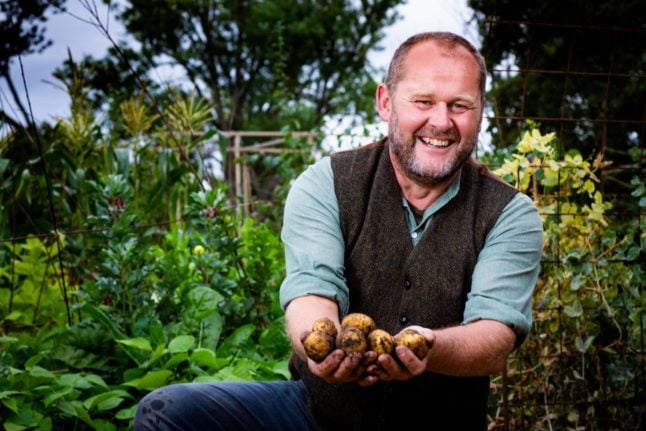Since April 1st, relaxed entry rules have allowed visitors from non-EU countries to enter Sweden without showing a vaccination pass or test certificate. As the last of the travel restrictions to be eased, summer tourism is finally set to return to the ways of pre-pandemic life.
As Swedes gear up for a summer without Covid-19, major tourist attractions, events, and festivals across the country are getting ready for what promises to be a fun few months.
STOCKHOLM
Pippi at Circus
After a two-year delay, ABBA and Astrid Lindgren fans finally have the chance to see Pippi at Cirkus, a new acrobatic musical performance at Cirkus Arena and Restaurant at Royal Djurgården in Stockholm.
The musical features lyrics by Björn Ulvaeus and music by Benny Anderson—the two “Bs” of ABBA fame—who have also previously written musicals like Chess, Mamma Mia and Kristina from Duvemåla. While the dialogue and lyrics of the show are in Swedish, the story is mainly told through circus acts.
The musical was initially set to premiere in Stockholm in June 2020, in celebration of Pippi Långstrump’s 75th anniversary, but was delayed due to the pandemic.
The world premiere of the musical is now set for July 1, 2022. Tickets are available through Ticketmaster.

Music festivals in Stockholm
This summer, Sweden’s longest music festival, Grönan Live, returns to Stockholm’s Gröna Lund.
The festival starts in early May and runs through the end of August with concerts at least once every week. Performers include Jorja Smith, Dua Lipa, Tove Styrke and John Legend, among others.
Festival passes cost SEK 395 and offer free admission to all concerts and dance evenings throughout the summer. They can be purchased directly from Gröna Lund.
Other big-name festivals lined up for the summer in Stockholm include Rosendal Garden Party, a four-day festival in June featuring artists like Jungle, Arlo Parks, Tyler the Creator, and The Strokes, and LollaPalooza Stockholm, a three-day event planned for July with bands such as Imagine Dragons, Post Malone, Lorde and Pearl Jam.
Allsång på Skansen will also return this year at the Solliden stage at Skansen open-air museum on the island of Djurgården in Stockholm. Allsång på Skansen is a classic summer concert where well-known Nordic musicians host a sing-a-long of classic Swedish songs. Allsång på Skansen will take place over eight Tuesdays, usually starting at the end of June. If you don’t manage to get tickets, don’t fret – it will also be broadcast live on SVT.
GOTHENBURG
Liseberg
On April 23, Liseberg opened at full capacity after more than two years of restrictions.
The park also recently opened a completely new area—Luna Park—complete with two new family-friendly rides, Turbo and Tempus.
The new area was built in celebration of Liseberg’s 100th anniversary, coming up in 2023. At that point, an additional roller coaster will also be featured in the new area.

Set sail for summer
Marstrand, on Sweden’s west coast, is known as Sweden’s sailing capital. It begins welcoming summer tourists for the 2022 season this month, offering gorgeous landscapes, quaint shops and cafes and exciting sailing events.
The 2022 summer sailing season kicks off on the weekend of May 13, with the Marstrand SuperStar Cup, followed the next weekend by the Marstrand Big Boat Race.
The island can be reached in about 50 minutes by public transport from Gothenburg.
Alternatively, throughout the summer months, Stromma Boat Tours offers a day-long cruise to the island directly from Lilla Bommen.
On July 3, Gotland Runt, the world’s largest annual ocean race begins in Stockholm. The course, which starts inside the archipelago, continues around Gotland and finishes in Sandhamn is about 350 nautical miles and takes most competitors about 3 days to complete. The offshore race is one of the highlights of Swedish summer.
Music
Live music events are also making a comeback in Gothenburg this summer.
On May 28, the city’s most charming district will be filled with live music from the American south at the Haga Bluegrass Street Festival, and Way out West returns in August with big name artists like Tame Impala, Burna Boy and Nick Cave and the Bad Seeds.
From September 1-4 Gothenburg will also celebrate the comeback of its annual Culture Festival.
MALMÖ
Music
The summer begins with the triumphant return of Malmö Rock after a three-year hiatus. The full-day concert features punk, hardcore, metal and rock bands, headlined by Norrland’s own, Raised Fist.
Malmö Sommarscen returns this year between the 18th June -31st July, with music, concerts, theatre performances and allsång taking place at 47 different locations across the city for six weeks over the summer. The full programme will be released on June 2nd.
Malmöfestivalen also returns this summer from August 12th-19th. Locals and visitors alike flock to the city centre to enjoy live music, art exhibitions, rides, and, of course delicious street food.
Street Food
Malmöfestivalen isn’t the only chance for Malmö-ites to get their hands on some delicious street food – the International Food Festival will also be in town between May 25th-29th, bringing authentic food and culinary culture from 15 different countries to the city.
Don’t live near Malmö? Don’t worry! The International Food Festival is travelling Sweden from May until September – maybe your town is on their tour?
Street Food Festivalen will also be coming to Malmö on July 1st-2nd, Stockholm on 26-27th August and Gothenburg on September 1st-4th.
By Lisa Catterall, Kirstie Hall, and Becky Waterton




 Please whitelist us to continue reading.
Please whitelist us to continue reading.
Member comments